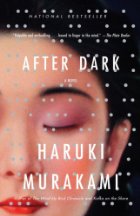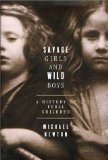
I burned through Haruki Murakami's latest novel, After Dark, in about three sittings. Sometimes described as a distillation of the author's standard oeuvre, I found it to be more like an overture: quick and light in its movement, it suggests Murakami's standard themes without exploring them in much depth. Were I putting together a Murakami syllabus, I might put After Dark at the beginning, to start a conversation that would deepen and expand with novels like The Wind-Up Bird Chronicle, A Wild Sheep Chase and Kafka on the Shore. As such, it would work well, introducing Murakami's preoccupations with the quester who wanders aimlessly, with the tendency of music to form unexpected alliances between people, and with the lost, escaped or misplaced woman (a sister in this case, although often a romantic partner) who must negotiate dreamlike landscapes of unspecified violence. It would also introduce the typically ambiguous Murakami climax and ending, although in the case of After Dark the resolution seems not so much ambiguous as nonexistent.
Murakami's language in After Dark suggests explicitly a screenplay. Perspectives are described in terms of camera angles, panning and zooming, and the dialogue among characters is sometimes conveyed in script form. In many places the narrator explains in so many words "our" role as a disembodied point of view devoid of ability to alter the course of events. My guess would be that Murakami is commenting, here, on the passiveness of traditional media consumption; one of the main characters, who spends nearly the entire novel in an existentially-motivated hibernation, is a beautiful young model named Eri Asai. One gets the sense that she has been observed, admired and consumed from without until her interior sense of self has completely deteriorated. Now "we" are one more external point of view, observing her but unable to help her. She is forced to negotiate alone the un-world of her deep sleep, and the strange dislocation (literal and metaphorical) at the heart of it. Again and again, in different ways, Murakami brings up the idea of a permeable or impermeable divide - between point of view and subject, between the respectable citizen and the criminal, between public and private, and, of course, between night and day. So in that sense, the semi-screenplay form is quite fitting.
For me, though, it also makes the novel less pleasant to read than other Murakami work. The prose is jerkier, more like a set of stage directions than a flowing narrative, and the dialogue seems insufficiently ingegrated into the prose. It also has that certain flatness of a play read silently; the lines rely on the creative interpretation that actors would give, and without it they seem lacking. In fact, throughout After Dark it kept striking me that this is one novel better-suited to life as a film - preferably directed by Jim Jarmusch or David Lynch. While all the stage directions are clunky to read, the actual images involved are intriguing and effective; to me, telling this story in film form would feel like cutting out the middleman. And Lynch would have to do very little adaptation to fit After Dark into his established oeuvre; as it ends, much like Mulholland Drive or the Twin Peaks pilot, we are unsure if Eri has met with triumph or defeat in her ordeal, or indeed whether the crisis was brought to any kind of breaking point at all. There is a scene where she attempts to communicate her plight to the outside world, and a point at which "we," as her disembodied audience, attempt to warn her of an impending danger. In both cases, the attempts seem completely unsuccessful, yet they form the only semblance of a climax available to the reader, and seem to represent some kind of corner turned. I generally adore this kind of ambiguity, yet Eri's story left me somehow unsatisfied; I wanted greater access to her, more meaty characterization - which, come to think of it, is just what her sister, the other protagonist of the novel, wants as well.
Despite my complaints, After Dark was an enjoyable way to spend a few days of reading, and there were some trademark sparkles of Murakami descriptive prowess. I particularly liked the phrase, in his opening paragraph, that describes Tokyo at night as "sending out new contradictions and collecting the old." As a précis, a Murakami primer or appetizer, it's quite effective, and whets my appetite for more.




